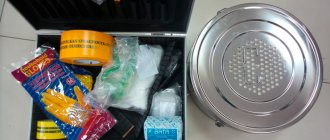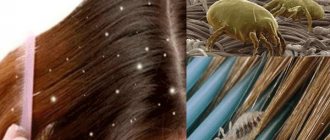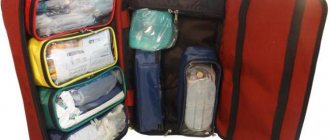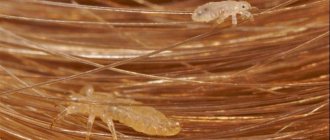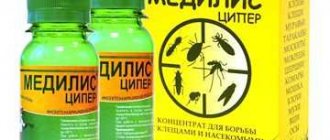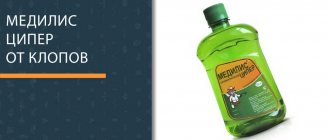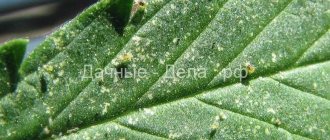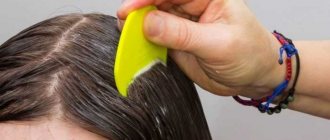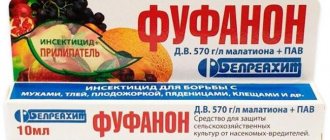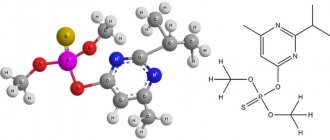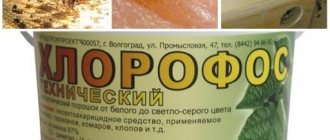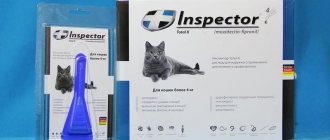Pediculosis is a disease caused by parasites such as body louse, head louse, and pubic louse. They are also carriers of typhus, relapsing fever, and Volyn fever. Those infected feel itching, a rash appears on their skin, rough areas appear, and pigmentation changes. In advanced stages, tangles form in the hair, an increased body temperature is observed, and the lymph nodes become enlarged. The seriousness of this disease is added by the high level of infection among the population: after all, only the clothes of the sick person will be a source of infection for another 3 months.
Order of the Ministry of Health No. 342
Thus, seemingly harmless lice is a socially dangerous disease that can quickly develop into an epidemic. We should not forget about the danger that the disease disrupts the harmonious functioning of the circulatory and nervous systems. If a pulmonary thrombus forms, it can be fatal.
Order No. 342 on pediculosis (anti-pediculosis styling is one of its constituent points) was adopted by the Ministry of Health of the Russian Federation in 1998. Its action is aimed at a comprehensive fight against the pathogens of pediculosis and typhus epidemics. It contains the following components:
- Prevention of typhus.
- Treatment of lice.
- Fighting pathogens.
- Measures to improve the epidemiological situation, sanitary and hygienic conditions in public institutions.
Let's look at anti-pediculosis styling in detail, an order for pediculosis.
Justification for issuing the order
The issuance of the order was justified by the massive spread of head lice in Russia, when the country recorded annual incidence statistics of up to 300 thousand people, and 75% of these cases were registered in children's institutions. A large number of patients were identified during hospitalization in medical institutions.
Outbreaks of pediculosis and exceeding the epidemic threshold were noted in some regions and republics of the Russian Federation, and the spread of body lice, which often became carriers of infectious diseases such as typhus and Brill's disease, was of great concern. According to the observations of doctors, a large number of patients were carriers of several types of lice at once: for example, 80% of the examined homeless people were diagnosed with simultaneous infestation with hair and body lice.
In Russia, unlike developed European countries, where typhus is not even mentioned, dozens of cases of this disease are registered annually, and in some areas about 100 cases of recurrent Brill's disease are detected annually.
There is a tendency that the diagnosis of typhoid is not carried out on time and many patients are hospitalized by mistake with other diseases, and the symptoms of typhoid are not detected. Often, a person's fever or rash was identified by doctors as an allergic reaction, meningitis, or other similar diseases. This happens as a result of insufficient professional training of doctors and staff, shortcomings in conducting analyzes and research.
Prevention of lice
Appendix No. 4 to this order prescribes the following measures to prevent the spread of lice:
- Routine examinations of the population by health workers in kindergartens, schools, dormitories, boarding schools, nursing homes, etc.
- Creating the necessary conditions to prevent the spread of lice during collective living: baths, showers, laundries with hot water, sanitary inspection rooms.
- Availability of adequate medical personnel to conduct examinations.
- Appropriate measures in foci of head lice infection.
- Explanatory educational program among the population.
Inspection for lice
According to Order No. 342 on pediculosis, anti-pediculosis styling can be avoided by preventing the spread of infection. The best preventative measure is inspection. It is carried out in a well-lit room using a magnifying glass or magnifying glass. The physician should pay great attention to the back of the head, temples and forehead.
The order recommends checking the following persons first (ideally four times a year):
- pupils of kindergartens, boarding schools;
- students of schools, secondary and higher professional institutions;
- teams of organizations, enterprises;
- patients admitted to hospital;
- residents of communal apartments and hostels;
- medical workers in contact with patients.
Order on pediculosis No. 342: anti-pediculosis styling
Many people are concerned about the fight against parasites that have already infected humans. The modern composition of anti-pediculosis styling is as follows:
- Bag for collecting the patient’s belongings: cotton or oilcloth.
- A galvanized tray or bucket where hair will be disinfected.
- Oilcloth bedding for manipulations.
- Latex gloves.
- A fine metal comb.
- Scissors and/or hair clipper.
- Alcohol lamp.
- 2-3 scarves.
- Disposable robe.
- Cotton pads.
- Table vinegar.
- The main elements in the composition of anti-pediculosis styling are means of destroying pubic and head lice: Ovicides for one-time treatment: shampoos, lotions, emulsion concentrates, etc.
- Neovicides (drugs with incomplete ovicidal action) for 2-fold treatment within a week to ten days. These are special soaps, shampoos and other products.
Measures to strengthen the fight against pediculosis
Pediculosis Appendix No. 4 contains regulatory documents on pediculosis, which define the role of lice in the spread of severe infectious diseases and recommends regular measures to combat pediculosis among the adult population and in children's institutions.
On a note!
The name "pediculosis" comes from the Latin. Pediculus refers to the parasitism of blood-sucking insects – lice – on humans.
A person is susceptible to parasitism by 3 types of lice:
- head lice;
- body lice, also known as linen lice;
- pubic lice.
The first 2 species are carriers of infectious agents such as typhus, relapsing fever, and Volyn fever.
The greatest danger in the event of epidemics are body lice, which, after consuming the blood of a patient, can become carriers within 5-7 days and transmit the infection to healthy people. The causative agents of these diseases are found in the stomach and feces of lice. Human infection occurs when secretions from infected louses get into wounds and scratching areas on the body.
The fight against pediculosis in the order provides for the following exterminatory and preventive measures:
- to prevent the appearance and further spread of lice, a set of hygiene measures is recommended, which includes washing the body once every 1-1.5 weeks, periodically changing linen when it is dirty, regularly cutting hair and washing underwear and outerwear;
- if parasites are found, then their destruction must be carried out both on the body of the sick person, and on his clothes, and bedding;
- if the number of insects is small, then they can be destroyed mechanically, that is, combing out lice and nits using a special comb or cutting off the hair; all collected parasites and hair are collected on paper and then burned;
- if lice and larvae are found on the body, disinfection and sanitary treatment are carried out, including washing with hot water and soap and a complete change of linen;
- to kill body lice, it is recommended to use pediculicides or boiling linen, as well as ironing all seams and folds;
- in hospitals, boarding schools, and children's institutions, processing is carried out by medical personnel;
- at home, the destruction of lice is carried out by residents under the control of the sanitary and epidemiological departments;
- to get rid of head lice, it is recommended to use insecticidal preparations and subsequent rinsing with a 5% acetic acid solution;
- It is prohibited to apply pediculicidal agents to children under 5 years of age, pregnant and lactating women, as well as people with skin diseases;
- underwear, bed linen, and clothing are soaked in water with the addition of special disinfectants.
Application of anti-pediculosis styling
According to Order No. 342 on pediculosis, anti-pediculosis styling is recommended to be used as follows:
- The person carrying out the treatment must wear a gown, a protective scarf and gloves.
- The patient is wrapped in oilcloth.
- The patient's eyes are protected with a towel folded in several layers to protect against the ingress of drugs.
- Carefully treat the patient's hair with the product, then cover his head with a cap for the time specified in the instructions for the drug.
- After treatment, the hair must be rinsed under running water.
- Next is the use of shampoo included in the styling.
- After the hair is dried, each strand should be combed with a sparse comb to look for eggs or dead lice.
- Re-examination of the patient to determine the success of the procedure.
- Treating the comb with alcohol or boiling water.
- Treating the premises with a pest control compound.
- The patient's belongings are placed in a special bag for further disinfection.
- The worker's gown, gloves, headscarf, as well as other disposable items used in the procedure are placed in a separate bag and disposed of.
Anti-epidemic measures in the source of infection
Typhus Typhus or rickettsiosis is a severe infectious disease in which destructive changes in blood vessels and the development of generalized thrombusculitis occur. Symptoms of this disease are:
- fever and temperature;
- intoxication of the body;
- roseola-petechial rash.
The disease often causes complications; special laboratory tests are performed to confirm the diagnosis. Treatment is carried out with antibiotics.
Brill's disease is a relapse or exacerbation of previously suffered typhus, and it can manifest itself without infection with lice. Its causative agent can persist for a long time in the body of people who have previously had typhus.
The 342nd number of the order on pediculosis contains as an appendix methodological instructions on how to correctly carry out measures in the epicenter of an epidemic in the event of a mass infection of people with typhus or Brill's disease. The main points of these instructions:
- Recommendations for doctors and health workers of medical institutions on the timely identification of patients with typhus or those who are suspected of having this disease.
- It is mandatory to submit reports on morbidity statistics every month and year.
- When a source of epidemic is identified in the patient’s area of residence, rest and work, mandatory disinfection of the premises is carried out, and all places where the patient has been over the last 21 days (incubation period) are taken into account.
- The contacts of the sick person are identified, the belongings of his belongings are identified, and he himself is subject to hospitalization in a local infectious diseases hospital for examination and treatment.
- When pediculosis is detected, special treatment and pest control measures are carried out.
- All items must be processed in a disinfection chamber;
- Blood tests are taken from all people who came into contact with the patient, serological diagnostics are carried out in a special laboratory to identify the sick, and in the future it is necessary to monitor their condition.
- All data is entered into an epidemiological survey map of the outbreak, which is then processed and registered with a special body dealing with especially dangerous infections for state sanitary and epidemiological surveillance in a given region of Russia.
Effective means
The following products are effective in styling:
- vinegar solution;
- 20% benzyl benzonate emulsion;
- pyrethrum powder;
- 5% boric ointment;
- 0.15% solution of karbofos;
- dust or tar soap;
- Medifox;
- lotion "Nitilon", "Loncid", "Nittifor".
For things:
- soda ash;
- "Medifox-Super";
- 50% concentrate of sulfidos, karbofos;
- pyrethrum powder;
- 20% water-kerosene-soap emulsion.
Prevention of lice and pediculosis
We reviewed Order No. 342, anti-pediculosis styling. Finally, let’s see what effective preventive measures this document recommends:
- Periodic bathing with mandatory washing of hair - at least once every 10 days.
- Change of bed linen - at least twice a month.
- Systematic washing of clothes and personal items as they become dirty, followed by treatment with an iron with a “steam” function.
- Daily combing of hair, cutting as necessary.
- Cleaning outerwear items and following the rules for storing them.
- Periodic wet cleaning of the house.
- Keeping your home clean.
Order No. 342 of the Ministry of Health of the Russian Federation offers effective measures for the prevention, treatment, and detection of head lice and typhus. It also contains a special anti-pediculosis composition that helps to quickly deal with the problem.
Order of the Ministry of Health of the Russian Federation dated November 26, 1998 No. 342
1. Epidemiological and sanitary-hygienic significance of lice. Pediculosis, or lice (from the word Pediculus - louse) is a specific parasitism of a person by lice that feed on his blood.
The main symptoms of pediculosis:
1) itching, accompanied by scratching and, in some people, allergies;
2) roughening of the skin from massive lice bites and the effect of insect saliva on the dermis;
3) melasma - skin pigmentation due to tissue hemorrhages and the inflammatory process caused by exposure to insect saliva;
4) matting is a rather rare phenomenon that forms when scratching the head: the hair becomes tangled, stuck together with purulent-serous secretions, which dry out in crusts on the head, and underneath there is a weeping surface.
Scratching contributes to the occurrence of secondary skin diseases: dermatitis, eczema, etc. Sometimes, with severe lice, low-grade fever and swelling of the lymph nodes appear.
Three types of lice parasitize humans: body lice (Pediculus vestimenti de Geer), head lice (P. capitis de Geer) and pubic lice (Phthyrus pubis L.).
Body lice and head lice are carriers of typhus, Volyn fever and relapsing fever. Body lice pose the greatest epidemiological danger. Lice, having drunk blood containing pathogens of typhus or relapsing fever, Volyn fever, after 4 - 7 days become capable of transmitting pathogens from a sick person to a healthy one.
In typhus, the pathogen is localized in the epithelial cells of the stomach or small intestine of the louse, multiplies and is excreted in the feces.
The causative agent of Volyn fever multiplies extracellularly in the intestines of the louse. A person becomes infected with typhus and Volyn fever when secretions of an infected louse get into the wounds where they scratch after a bite or when an insect is crushed. In lice feces that fall on clothing, rickettsia remain viable and pathogenic for up to 3 months or more.
In relapsing fever, spirochetes travel with the blood into the louse's stomach and then into the body cavity. A person becomes infected from an infected louse when crushing it, introducing spirochetes into the superficial areas of the skin when scratching or onto the mucous membranes.
Infectious agents (typhus, relapsing fever, Volyn fever) carried by lice are not transmitted transovarially (from the female to the offspring).
The pubic louse has virtually no epidemiological significance, however, just like body and head lice, it causes great concern to a person, causing itching. With severe scratching, various pustular skin diseases may occur.
2. General information about the morphology and biology of lice.
Lice are a detachment of blood-sucking insects, permanent ectoparasites of humans and other mammals. The main characteristics of the order: the body is oval or oblong, flattened in the dorsoventral direction; the color is grayish-brown; in specimens engorged with fresh blood, the color varies from reddish to black; the head is small, tapering anteriorly, and bears five-segmented antennae (antennae); oral apparatus piercing-sucking; breast is fused; the abdomen consists of 9 segments, its posterior end is bilobed in females, and rounded in males and a chitinized conical copulatory apparatus is visible through the last three segments; the legs are strong, five-segmented, there is a protrusion on the lower leg, the paws end in sickle-shaped claws, which bend to the protrusion of the lower leg, resemble a claw in shape and are used for fastening to hair and clothing. Males are usually smaller than females. Lice are oviparous. Eggs (nits) are oblong-oval in shape (1.0 – 1.5 mm in length), covered on top with a flat cap, yellowish-white in color, glued with the lower end to the hair or fibers of the fabric by the female’s secretions during laying; immature stages (nymphs) differ from adults in being smaller in size and lacking external genitalia. Lice at all stages of development, except eggs, suck the host's blood. The head louse is found in the hairline near the skin, while the body louse is found mainly on clothing. People become infected with lice through contact with lice-infested people, for example, when children communicate in organized groups, in crowded transport, when sharing clothes, bedding, bedding, combs, brushes, etc. Adults become infected with pubic lice through intimate contact , and in children - from adults caring for them, as well as through underwear.
The head louse and body louse belong to the same genus Pediculus and are very similar in appearance. However, they have morphological differences, which can be determined using a magnifying glass with two- and ten-fold magnification or a microscope*.
*To determine the type of lice, a temporary preparation is prepared. A drop of glycerol is applied to a glass slide, a louse is placed in it and covered with a cover glass or cellophane.
HEAD LICE – Pediculus capitis de Geer, smaller than the body louse, female body length 2.1 – 3.5 mm, male – 2.0 – 3.0 mm; on the sides the abdominal segments (festoons) are separated by relatively deep notches; setae of abdominal sternites larger, dagger-shaped; the female's genitalia are wide and blunter at the end; antennae relatively short and dense, third segment barely longer than wide; the third segment (femur) of the 2nd pair of legs is relatively short, the length exceeds the width by 2.4 times; the claws are more finely pointed.
The head louse lives and reproduces in the scalp, preferably on the temples, back of the head and crown. Feeds every 2 – 3 hours. It does not tolerate hunger well; at +30°C it usually dies within a day.
The development of eggs occurs within 5–9 days, larvae – 15–17 days.
The lifespan of adults is 27–30 days. The female lays 3 to 7 eggs daily, and throughout her life - from 38 to 120 eggs. Very sensitive to changes in temperature and humidity, optimum around + 28°C; when the temperature drops, development slows down; at +20°C the female stops laying eggs and the development of larvae stops. Outside the host's body, it dies within a day.
BODY LICE – Pediculus vestimenti de Geer is larger than the head louse, the body length of the female is 2.3 – 4.75 mm, the male – 2.1 – 3.7 mm, the color is lighter. The notches between the abdominal scallops are less deep; setae on sternites small, needle-like; the female's genitals are sharper, pincer-shaped, the antennae are thinner, the third segment is twice as long as its width; the thigh of the 2nd pair of legs is almost twice as long as it is wide; the claws on the tarsi are relatively wider and sickle-shaped.
The body louse lives in the folds of linen and dresses, especially in the seams, where it lays eggs, gluing them to the fibers of the fabric; eggs can also stick to hair on the human body, except the head. He eats 2–3 times a day: he is full in 3–10 minutes, and at one time he drinks noticeably more blood than the head.
Lays about 10 eggs daily, during life on average about 200, with a maximum of 300. Eggs develop within 7–14 days, larvae 14–18 days. The average lifespan of adults is 34 days, with a maximum of 46 days. The optimal temperature for the development of lice is 2 – 4 degrees higher than that of head lice, + 30 – 32°C; at a temperature of +25 – 30°C they can fast for 2 – 3 days, and with a drop in temperature to + 10 – 20°C they can fast for about a week. All stages of development, including the egg, are very sensitive to temperatures above +37°C.
Lice tolerate dry heat (+47 – 50°C) for up to 10 minutes and then die. This is used in the disinfection of clothing. Lice tolerate lower temperatures and high humidity much better; at -13°C they remain viable for up to 7 days, and remain alive in water for up to 2 days. The negative attitude of lice to high temperatures is important epidemiologically, since lice leave feverish patients and can crawl onto surrounding people.
PUBIC LICE, or LICE, belongs to the genus Phthyrus, species P. pubis L., it is the smallest of human lice; body length 1.36 – 1.6 mm; the shape of the body resembles a shield, the last four segments of the abdomen on the sides bear finger-like processes with a tuft of setae; the legs, especially the 2nd and 3rd pairs, are thickened; paws with large curved claws. This structure of the legs and body allows the flathead to rest on the short hairs of the pubis, eyebrows, and eyelashes. With significant numbers, insects can spread over the entire lower part of the body, especially on the stomach, where, as a result of their blood-sucking, characteristic bluish marks remain for a long time. The pubic louse is inactive, usually remains in place, plunging its proboscis into the human skin, and sucks blood frequently, with short breaks.
Fecundity is low, the female lays no more than 50 eggs during her life, the egg hatches into a nymph that lives 15-17 days, the female’s lifespan is about a month. A living creature outside of a person can live only 10 – 12 hours.
3. Organization and implementation of anti-pediculosis measures.
3.1. Anti-pediculosis measures include both a set of general measures aimed at maintaining proper sanitary-hygienic and anti-epidemic regimes in organizations, teams, etc., and specific measures for the sanitation of people who have been diagnosed with lice. Anti-pediculosis measures are part of the system of measures to preserve and strengthen public health and are carried out among all contingents and groups of the population. Responsibility for their organization and implementation lies with the leaders of children's and adolescent organized groups, educational institutions, enterprises, farms, organizations, institutions, regardless of their form of ownership and departmental affiliation.
3.2. Work to prevent and combat head lice is carried out in accordance with regional programs (plans) for the control of head lice and the prevention of infectious diseases transmitted by lice, agreed upon with the interested ministries and departments, bodies and institutions of education, housing and communal services, etc.
When developing a program (plan), the following activities are envisaged:
3.2.1. Organizing and conducting routine inspections of the population (orphanages, children's homes, preschool institutions, institutions of general and vocational education, institutions of the social security system (nursing homes and homes for the disabled), hostels, industrial enterprises, etc.) in order to identify and rehabilitate people with pediculosis;
3.2.2. Providing the conditions necessary to comply with sanitary-hygienic and anti-epidemic regimes in organized groups (provision of sanitary inspection rooms, baths, laundries, showers, hot water, replacement bed linen, etc.);
3.2.3. Organization of training of medical personnel of medical institutions, orphanages, children's homes, preschool institutions, institutions of general and vocational education, institutions of the social security system (nursing homes and homes for the disabled) on the fight against pediculosis and the prevention of typhus;
3.2.4. Providing treatment and prevention institutions, State Sanitary and Epidemiological Supervision centers, disinfection stations, State Unitary Disinfection Enterprises (GUDP) and the population with pediculicidal agents;
3.2.5. Providing medical and preventive institutions, State Sanitary and Epidemiological Supervision centers, disinfection stations and State Traffic Safety Inspectorate with disinfection equipment;
3.2.6. Organization of anti-pediculosis measures in foci of pediculosis;
3.2.7. Conducting awareness-raising work among the population on the issues of combating head lice.
3.3. When conducting inspections for pediculosis, people whose examination reveals both viable and non-viable lice at any stage of development (nit egg, larva, adult insect) are subject to registration.
Each identified case of pediculosis is recorded in the medical documentation: “Medical record of an inpatient patient” (form No. 003 - 1/u), “Medical record of an outpatient patient” (form No. 025/u-87), “History of child development” (form . No. 112/u), “Medical card of a patient with fungal diseases” (form No. 065 – 1/u), “Medical card of a child” (form No. 026/u), “Card for calling an ambulance” (form No. 110/u), “Insert sheet for a teenager to the medical record of an outpatient” (form No. 025 – 1/u), “Medical record of a patient with sexually transmitted diseases” (form No. 065/u).
In the generally accepted manner, each case of detected lice is entered into the “Statistical coupon for registration of final (refined) diagnoses” (form No. 025 - 2/u); “Outpatient Patient Certificate” (form No. 025 – 10/u-97), as well as in the “Infectious Diseases Register” (form No. 060/u). The journal is kept in all medical and preventive institutions, including specialized ones, regardless of the form of ownership and departmental affiliation, orphanages, children's homes, preschool institutions, institutions of general and vocational education, institutions of the social security system (nursing homes and homes for the disabled), children's health centers institutions, etc. About each identified case of pediculosis, a medical or other worker must inform the territorial center of the State Sanitary and Epidemiological Supervision by telephone, followed by sending an emergency notification (form No. 058/u) in the prescribed manner.
The reporting forms “Information on infectious and parasitic diseases” No. 1 (monthly) and No. 2 (annually) show newly identified cases of head, body and mixed lice.
Information about pediculosis and applications for anti-pediculosis treatment are sent by medical workers of treatment and preventive institutions and State Sanitary Epidemiological Supervision centers to the disinfection departments (disinfection departments) of the State Sanitary Epidemiological Supervision centers, focal disinfection departments of a disinfection station or State Traffic Safety Inspectorate, where they are registered in the prescribed manner.
The period of observation of the outbreak of pediculosis is 1 month, with examinations for pediculosis in the outbreak once every 10 days. The lesion should be considered sanitized if the results of three examinations are negative. Control over the sanitization of outbreaks is carried out by the disinfection departments (disinfection departments) of the centers of the State Sanitary and Epidemiological Supervision, the focal disinfection departments of disinfection stations or the Main Directorate of Disinfection.
3.4. Medical workers of outpatient clinics, hospitals, orphanages, children's homes, preschool institutions, institutions of general and vocational education, institutions of the social security system, medical enterprises, regardless of their form of ownership and departmental affiliation, are required to actively identify persons with head lice when providing medical care. and carrying out preventive examinations.
The following are subject to examination for pediculosis:
3.4.1. Students of general and vocational education institutions - at least 4 times a year after each holiday, monthly - selectively (at least four to five classes) and 10 - 15 days before the end of the school year. Inspections are carried out by medical staff of institutions with the possible involvement of teachers.
3.4.2. Students of boarding schools, children living in orphanages, orphanages, etc. - weekly. The examination is carried out by medical personnel with the assistance of educators.
3.4.3. Children going to children's health institutions, labor and recreation camps are examined by medical staff of the clinic at their place of residence before leaving. While in recreation areas, children are examined by camp medical staff before each bath and before returning to the city (1 to 3 days in advance).
3.4.4. Children attending preschool institutions are examined daily by the institution's health workers (doctor, nurse).
3.4.5. Employees of enterprises, including those in rural areas, are examined by medical workers at the clinic and/or medical units 1–2 times a year during medical examinations and medical examinations.
3.4.6. Persons in social security institutions are examined by medical staff 2 times a month.
3.4.7. Patients admitted for inpatient treatment are examined by a nurse in the admission department, and for long-term treatment, by a nurse in the medical department at least once every 10 days. It is prohibited to refuse hospitalization for the underlying disease due to detected lice.
3.4.8. Persons living in dormitories are examined upon arrival and then quarterly. The examination is carried out by medical workers with the involvement of teachers, the commandant, etc.
3.4.9. Medical workers in medical institutions examine patients for head lice when seeking medical help. Particular attention is paid to persons sent for inpatient treatment, to organized groups (sanatoriums, rest homes, children's institutions), living in dormitories, lonely elderly people, chronically ill people, disabled people, people without a fixed place of residence, etc.
3.5. Students of medical institutes, students of medical schools, activists of the Red Cross and Red Crescent Society and other public organizations are involved in carrying out simultaneous mass examinations of organized groups and the unorganized population according to epidemiological indications by decision of the territorial health authority to help workers of medical institutions.
3.6. To conduct an examination for lice, you must have a well-lit workplace and a magnifying glass that allows you to examine both the hairy parts of the body and clothing.
When examining people for lice, you need to pay special attention to:
– when examining the head – to the temporo-occipital areas;
– when examining clothes and linen – for seams, folds, collars, belts.
Lists of people examined for lice are not compiled.
3.7. If body lice or their eggs are detected, as well as mixed pediculosis, it is necessary to urgently call specialists from the disinfection departments (departments) of the State Sanitary and Epidemiological Supervision centers, focal disinfection departments of disinfection stations or the State Administration for Treatment of People who have been diagnosed with body lice. Accounting and registration of such people is carried out in accordance with the established procedure.
3.8. When head lice are detected in single elderly and disabled people, in people living in unfavorable sanitary conditions, dormitories, and in members of large families, medical personnel also submit an application for treatment to the disinfection departments (disinfection departments) of the State Sanitary and Epidemiological Supervision centers, the focal disinfection departments of disinfection stations or the Main Directorate of Disinfection.
3.9. When head lice is detected in people living in comfortable apartments, treatment is carried out by the population.
The medical professional gives recommendations on mutual examination of family members and the use of anti-pediculosis drugs.
3.10. Upon receipt of information about the detection of pediculosis in persons sent by medical institutions for inpatient or sanatorium treatment, the administration of the institution finds out the reasons for the unsatisfactory examination and takes measures to sanitize the home (examination of contacts and organization of anti-pediculosis treatment).
3.11. If head lice is detected in a children's institution with daily visits, the child is removed from the team.
The medical worker gives parents recommendations on anti-pediculosis treatment at home or on carrying out sanitary treatment in the sanitary inspection room. Admission of a child to a child care facility is permitted only after a control examination.
3.12. When body or group (2 or more cases) head lice is detected in organized groups, a mandatory epidemiological investigation is carried out. During an epidemiological investigation, attention is paid to identifying the source of lice infection and the sanitary and hygienic regime (conditions for washing, changing bed linen, underwear, storage conditions for outerwear, hats, etc.). The volume and method of treatment are determined in each specific case by a commission of a disinfection doctor, epidemiologist and sanitary doctor supervising the institution.
3.13. If head lice is detected in an organized child outside of a child care institution (upon admission to a hospital, at an appointment at a clinic, or an examination at home), a medical worker at a preschool institution is obliged to immediately conduct a thorough examination of all children and staff of the group that the child attended.
3.14. Specialists from the departments of municipal hygiene, hygiene of children and adolescents, and occupational hygiene of the State Sanitary and Epidemiological Supervision Center are necessarily involved in organizing anti-pediculosis measures, control examinations for lice, and epidemiological investigations of cases of lice in organized groups.
3.15. Selective control over the organization of anti-pediculosis measures in organized teams is carried out by medical workers of the disinfection departments (departments) of the State Sanitary and Epidemiological Supervision centers, departments of focal disinfection of disinfection stations or the State Administration for Disinfection.
3.16. The organization of anti-pediculosis measures in the serviced territory is entrusted to the disinfection stations, the Main Directorate of Public Administration and the disinfection departments (departments) of the centers of the State Sanitary and Epidemiological Supervision. Control over their organization rests with the chief physician of the State Sanitary and Epidemiological Supervision Center.
3.17. Responsibility for carrying out anti-pediculosis measures in organized groups, medical and other institutions lies with the administration of the institution.
4. Preventive and exterminatory measures.
4.1. In order to prevent the appearance of lice and their spread in the family, the team carries out preventive (hygienic) measures, which include: regular washing of the body - at least once every 7 - 10 days, changing underwear and bed linen at the same time or as needed contamination followed by washing; regular haircuts and daily combing of scalp hair; systematic cleaning of outer clothing, clothing, bedding and their tidy maintenance, regular cleaning of premises, keeping furnishings clean.
4.2. If lice are detected at any stage of development (egg, larva, adult insect), disinsection measures are carried out simultaneously, destroying lice directly both on the human body and on his underwear, clothes and other things and objects.
4.3. Disinsection measures to combat lice include: mechanical, physical and chemical methods of destroying insects and their eggs.
4.4. In case of minor infestation of people with head lice (from 1 to 10 specimens, including eggs), it is advisable to use a mechanical method of destroying insects and their eggs by combing out insects and eggs with a fine comb, cutting or shaving hair. To collect hair, they place oilcloth or paper, which is burned along with the hair and insects.
Before combing nits out of your hair, wash your hair and rinse with a warm 4–5% aqueous solution of table vinegar or a warm 5–10% solution of acetic acid. Then the nits are combed out with a fine-toothed comb; first, a cotton wool or thread is passed through the teeth of the comb, which is generously moistened with vinegar.
4.5. If lice are found on a person’s body, sanitary treatment is carried out: washing the body with hot water, soap and a washcloth, while changing clothes, and, if necessary, shaving the hair.
4.6. If people are slightly affected by body lice or in the absence of pediculicides, they use boiling linen, ironing seams, folds, waistbands of linen and clothes that are not subject to boiling with a hot iron.
4.7. In hospitals, orphanages, children's homes, preschool institutions, institutions of general and vocational education, institutions of the social security system (nursing homes and homes for the disabled), dormitories, children's health institutions, treatment of people with head lice is carried out on site by the medical staff of these institutions.
4.8. Treatment of home foci of head lice is possible by the residents themselves, with mandatory instruction and subsequent monitoring by the disinfection departments (disinfection departments) of the State Sanitary and Epidemiological Supervision centers, focal disinfection departments of the disinfection station or the State Administration for the Prevention of Diseases.
4.9. The treatment of people and their belongings with body lice or mixed lice is carried out only by the disinfection departments (disinfection departments) of the State Sanitary and Epidemiological Supervision centers, the focal disinfection departments of the disinfection station or the State Traffic Safety Inspectorate.
4.10. For moderate and severe infestation (10 specimens or more, including insects and eggs), it is recommended to use insecticides - pediculicides. Treatment of children under 5 years of age, pregnant and lactating women, people with diseases and damage to the scalp and body (microtraumas, dermatitis, eczema, etc.), and those with allergies to medical and cosmetic products, with pediculicides is prohibited.
To treat the hairy parts of the body, the following insecticides are used: 0.15% aqueous emulsion of karbofos (consumption of the drug for treating one person is 10 - 50 ml), 20% water-soap suspension of benzyl benzoate (10 - 30 ml), 5% boric ointment (10 – 25 g), lotions NITTIFOR, LONCID, NITILON (50 – 60 ml), foaming detergent TALLA (10 – 50 ml), VEDA shampoo (30 ml), MEDIFOX product (50 – 100 ml), VITAR and ANTIENTOM soaps (30 d), pyrethrum powder (15 g), 10% aqueous soap-kerosene emulsion (5 - 10 ml). Exposure with these products is 10–40 minutes in accordance with the label for each specific product.
After treating the scalp and washing it, the hair is rinsed with a warm 5 - 10% aqueous solution of acetic acid.
4.11. Lice on linen, clothes and other things are destroyed immediately as insects are discovered. Lice-infested underwear is boiled in a 2% soda ash solution for 15 minutes, ironed on both sides, paying attention to seams, folds, waistbands, etc.; subjected to chamber processing in accordance with the instructions “On the disinfection and disinsection of clothing, bedding, shoes and other objects in steam-air-formalin, steam and combined disinfection chambers and the disinsection of these objects in air disinfection chambers,” approved on 08.22.78.
4.12. As insecticides for treating clothing, use 0.15% aqueous emulsion of 50% emulsifiable karbofos concentrate, 0.06% aqueous emulsion of 50% e. to. sulfidophos, pyrethrum powder, 1% Neopin dust, 2% SULFOLAN-U dust, 2% BIFETRIN-P dust, VITAR soap, MEDIFOX-SUPER product, 20% aqueous soap-kerosene emulsion.
4.13. Underwear and bed linen, and other items to be washed, are soaked in aqueous emulsions for 5 to 10 minutes, depending on the contamination with eggs. The consumption rate of aqueous emulsions is 2.5 liters per set of underwear; 4 – 4.5 liters per set of bed linen or per kg of dry clothes. Then the items are rinsed well, and then washed in the usual way with the obligatory use of soap and soda.
4.14. Outerwear, bedding (except for pillows) and other things are irrigated with a water emulsion. Insect habitats are treated with special care: collars, belts, seams, folds. The consumption rate for a wool dress is 30 - 50 ml, for a set of bedding (mattress, blanket) - 400 ml, for a set of clothes (coat, jacket, trousers, hat) - 350 ml.
4.15. Dusts and powders are used at a consumption rate of 175 - 250 g per person’s clothes and exposure from 30 minutes to 1 hour according to the label.
4.16. When using VITAR insecticidal soap for soaking linen and clothes, its consumption rate is 30 g with an exposure of 20 minutes. Then the laundry is rinsed. Then use normal washing and ironing.
4.17. To apply liquid preparations to clothing, bedding (mattresses, blankets), and to treat rooms, hand-held sprayers are used: quasar, hydraulic remote control, automax and others, as well as clothes brushes. Powdered preparations are applied to things using a PR sprayer, a rubber balloon or a gauze bag.
4.18. If necessary, to treat premises and objects, use 0.5% aqueous solution of chlorophos, 0.15% aqueous emulsion of karbofos, pyrethrum powder, 1% neopine dust, aerosol cans "NEOFOS-2", "CARBO-ZOL", "A- STEAM”, MEDIFOX-SUPER product in accordance with the labels and instructions for the use of each of these products.
4.19. If necessary, pediculicide treatment is repeated after 7–10 days.
4.20. For head and body lice in areas of disease or in cases where there are no other remedies, it is permissible to use BUTADIONE, a synthetic medicinal drug.
When butadione is taken orally, human blood becomes toxic to head and body lice within 14 days. Butadione is prescribed to adults after meals for two days, 0.15 g 4 times a day. The daily dose should not exceed 0.6 g. The use of butadione is contraindicated for children under 4 years of age. Children from 4 to 7 years old are prescribed butadione 0.05 g; from 8 to 10 years – 0.08 g; over 10 years – 0.12 g. These doses are recommended to be taken 3 times a day for 2 days.
4.21. The effectiveness of the anti-pediculosis measures carried out is monitored by the person responsible for these measures by visual inspection of the scalp (if necessary, the scalp is combed with a fine comb to comb out lice), linen, clothing and other things and objects.
5. Precautions when carrying out anti-pediculosis treatments.
5.1. Packaging of pediculicides, preparation of their working forms, soaking of things to be treated, and their subsequent washing are carried out in non-residential, well-ventilated areas, or in the open air, with the obligatory use of special clothing: rubber gloves, a robe, shoes; to protect the respiratory tract - universal respirators - RU-60M, RPG-67 with an anti-gas cartridge of grade A. When working with dusts - anti-dust respirators (Astra-2, F-62Sh, Lepestok).
5.2. Dishes used for diluting pediculicides and preparing their forms are thoroughly washed with hot water, baking soda and soap. In the future, it should not be used for storing food, fodder, or for cooking.
5.3. Before washing, woolen underwear treated with organophosphorus preparations is soaked in a soda solution for at least a day, after which it is washed and dried in the open air (at least 4 hours) to remove the odor.
5.4. Disinsection of premises and furnishings with preparations in aerosol packaging is carried out when heating devices have cooled down, in the absence of people, animals, birds, and fish. After this, the room is ventilated for at least 30 minutes. Food products are removed during processing. The aerosol is not sprayed near fire. It is strictly prohibited to smoke, drink or eat while working with pediculicidal preparations.
5.5. After finishing the treatments, the overalls are dried and ventilated in the open air or in a specially designated room. It is stored in special cabinets. Workwear is washed when soiled, but at least once a week, in a soap-soda solution (2 tablespoons of soda ash and one piece of soap per bucket of water).
5.6. Pediculicides are stored only in specially adapted rooms, packed in dense containers. To destroy lice, it is prohibited to use products that do not have a passport indicating the name of the drug, the content of the active principle, the manufacturer, the date and expiration date.
5.7. People who constantly work with pediculicides undergo periodic medical examinations in accordance with Order of the Ministry of Health of Russia of March 14, 1996 No. 90 “On the procedure for conducting preliminary and periodic medical examinations of workers and medical regulations for admission to the profession.”
5.8. Treatment of people or linen infested with lice should be carried out strictly in accordance with guidelines, instructions or labels for each specific product.
6. First aid for pediculicide poisoning.
6.1. If safety rules are violated when working with pediculicides, poisoning can occur.
6.2. The first signs of poisoning by the most toxic organophosphorus compounds are: unpleasant taste, salivation, lacrimation, sweating, constriction of the pupils, nausea, headache. In more severe cases, vomiting, intestinal spasms, diarrhea, shortness of breath may occur, and fibrillary twitching of individual muscle groups may develop, including tonic and clonic convulsions. Particularly sensitive people may develop allergic dermatitis.
6.3. If signs of pediculicide poisoning appear, the victim should be taken to fresh air, take off contaminated clothing, rinse his mouth and throat with boiled water or a 2% solution of baking soda, and ensure rest.
6.4. If the drug is accidentally swallowed, drink several glasses of water or a pink solution of potassium permanganate (1:5,000; 1:10,000), then induce vomiting. Repeat the procedure 2 – 3 times. To lavage the stomach, you can also use a 2% solution of baking soda (1 teaspoon per glass of water) or a suspension of one of the sorbents: activated carbon, chalk, burnt magnesia (2 tablespoons per 1 liter of water). 10 - 15 minutes after gastric lavage, you need to drink a suspension of burnt magnesia or activated carbon (1 - 2 tablespoons per glass of water) in small sips. Then take a saline laxative (1 tablespoon per 1/2 glass of water).
CASTOR OIL IS CONTRAINDICATED.
6.5. When initial signs of poisoning with organophosphorus drugs appear, ingestion of 2–3 tablets of belladonna extract, besalol, becarbonate or bellalgin is indicated.
Specific antidote for poisoning with pediculicidal drugs are atropine, prozerin and other antispasmodic drugs.
6.6. If the undiluted drug gets on the skin, carefully remove it with a cotton swab without rubbing, then wash the skin with soap and water, and then treat it with a 5-10% solution of ammonia or a 2% solution of soda (for organophosphorus compounds, a 5% solution of chloramine B).
6.7. If any drug gets into your eyes, you should immediately rinse them with plenty of clean water or a 2% solution of baking soda for 5 to 10 minutes. In case of irritation of the eye mucosa, it is necessary to instill a 20-30% solution of albucid, in case of pain - a 2% solution of novocaine.
If you have symptoms of poisoning, you should seek medical help.
7. Contraindications to constant work with insecticides.
In accordance with Order of the Ministry of Health of Russia dated March 14, 1996 No. 90 “On the procedure for conducting preliminary and periodic medical examinations of workers and medical regulations for admission to the profession,” people who have:
a) organic diseases of the central nervous system;
b) mental illness (including in remission);
c) epilepsy;
d) endocrine-vegetative diseases;
e) active form of pulmonary tuberculosis;
f) bronchial asthma;
g) inflammatory diseases of the respiratory system (bronchitis, laryngitis, atrophic rhinitis, etc.);
h) diseases of the liver, kidneys, gastrointestinal tract (peptic ulcer, chronic gastritis, colitis);
i) skin diseases (eczema, dermatitis);
j) eye diseases (chronic conjunctivitis, keratitis, etc.);
k) severe diseases of the respiratory system and cardiovascular system that interfere with the use of respirators.
